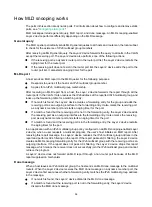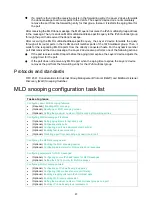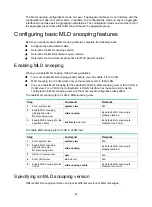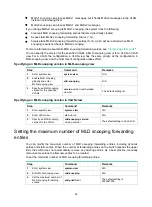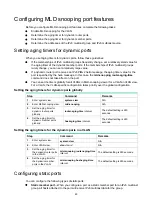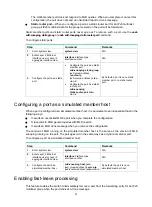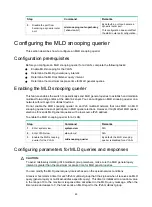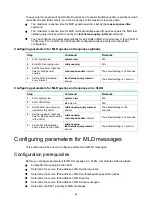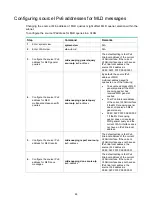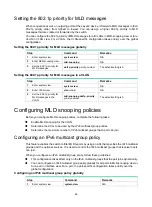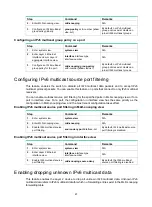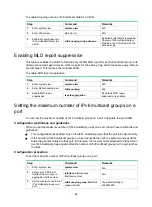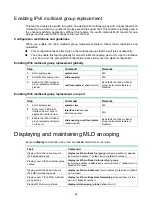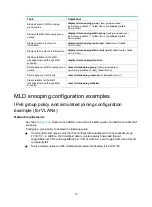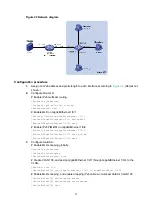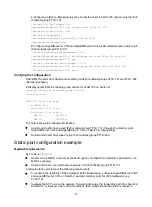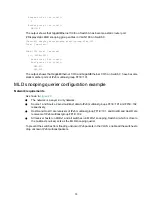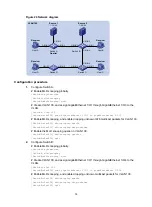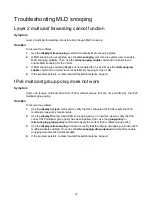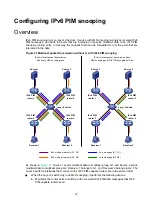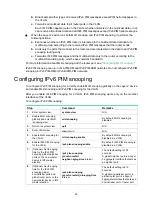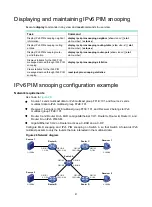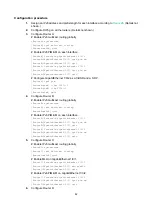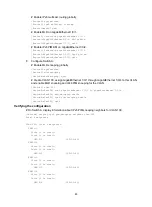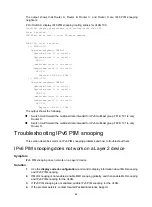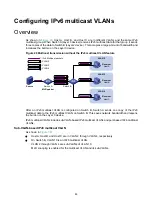
70
Task Command
Display dynamic MLD snooping
group entries.
display mld-snooping
group
[
ipv6-group-address
|
ipv6-source-address
] * [
vlan
vlan-id
] [
verbose
] [
slot
slot-number
]
Display static MLD snooping group
entries.
display mld-snooping
static
-
group
[
ipv6-group-address
|
ipv6-source-address
] * [
vlan
vlan-id
] [
verbose
] [
slot
slot-number
]
Display dynamic router port
information.
display mld-snooping
router-port
[
vlan
vlan-id
] [
slot
slot-number
]
Display static router port information.
display mld-snooping
static-router-port
[
vlan
vlan-id
] [
slot
slot-number
]
Display statistics for the MLD
messages learned through MLD
snooping.
display mld-snooping statistics
Delete dynamic MLD snooping group
entries.
reset mld-snooping group
{
ipv6-group-address
[
ipv6-source-address
] |
all
} [
vlan
vlan-id
]
Delete dynamic router ports.
reset mld-snooping router-port
{
all
|
vlan
vlan-id
}
Clear statistics for the MLD
messages learned through MLD
snooping.
reset mld-snooping statistics
MLD snooping configuration examples
IPv6 group policy and simulated joining configuration
example (for VLANs)
Network requirements
As shown in
, Router A runs MLDv1 and acts as the MLD querier, and Switch A runs MLDv1
snooping.
Configure a group policy to achieve the following goals:
•
Host A and Host B receive only the IPv6 multicast data addressed to IPv6 multicast group
FF1E::101. In addition, IPv6 multicast data is uninterruptedly forwarded through
GigabitEthernet 1/0/3 and GigabitEthernet 1/0/4 of Switch A, even though Host A and Host B
temporarily fail.
•
Switch A drops unknown IPv6 multicast data instead of flooding it in VLAN 100.

